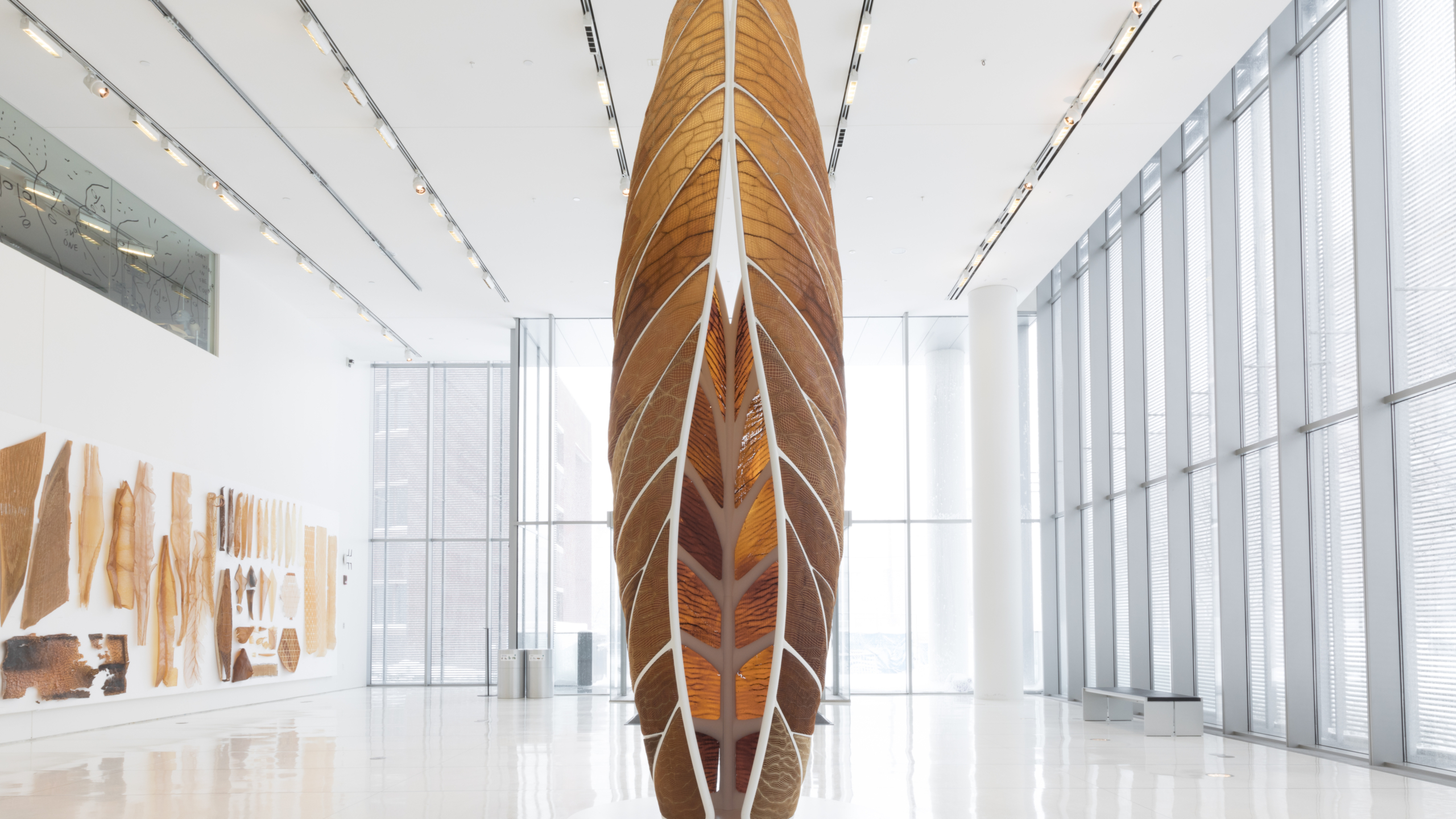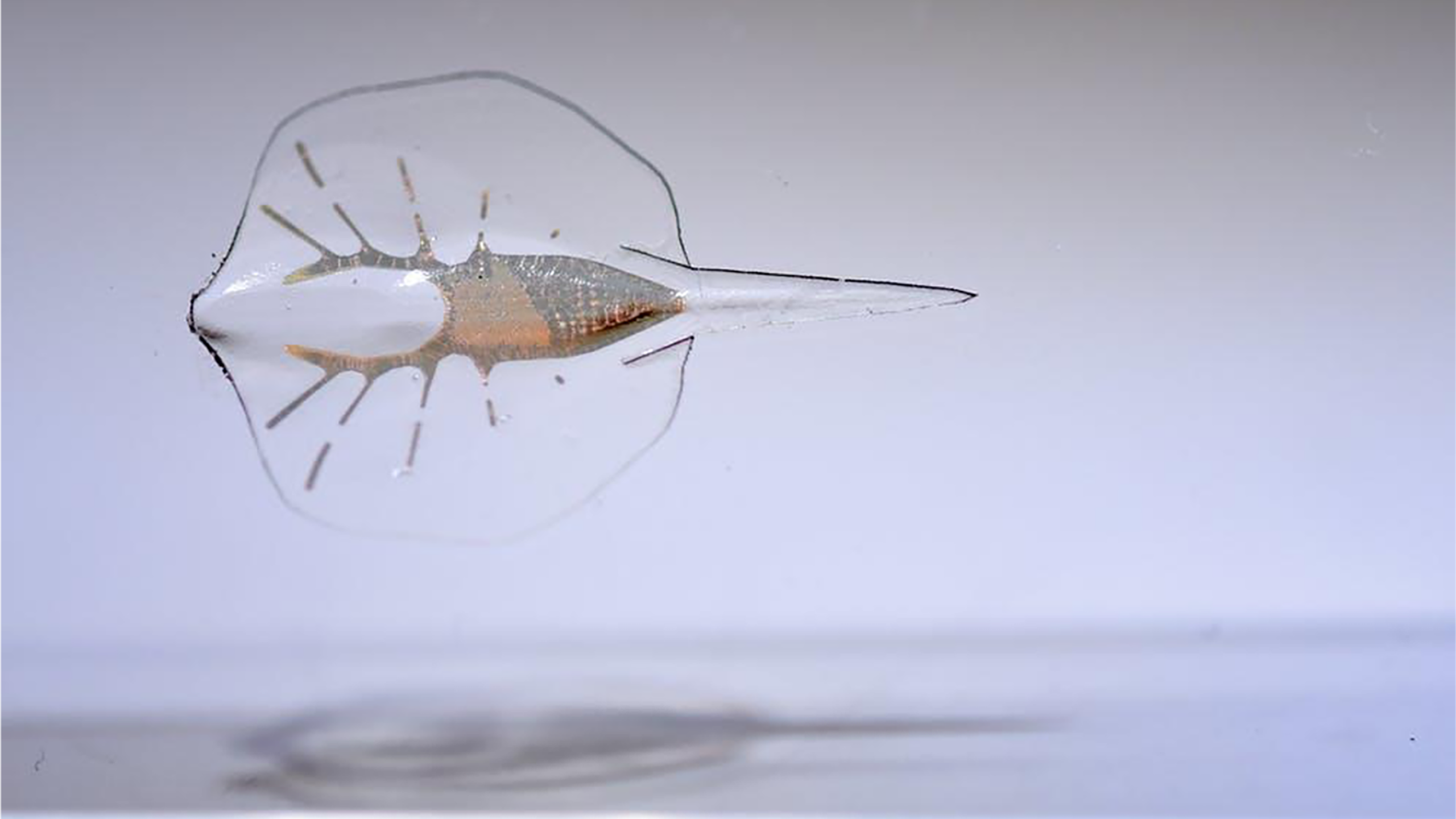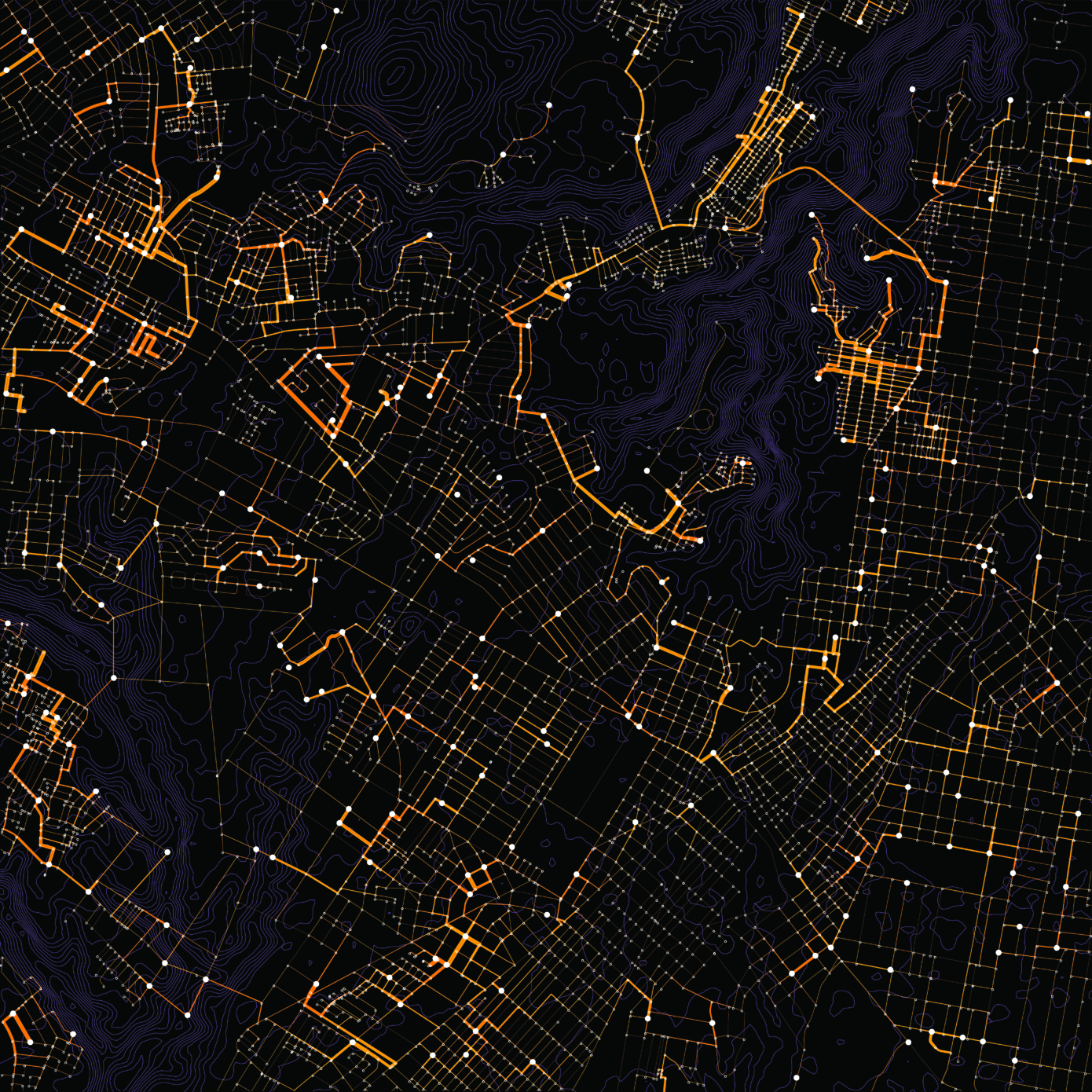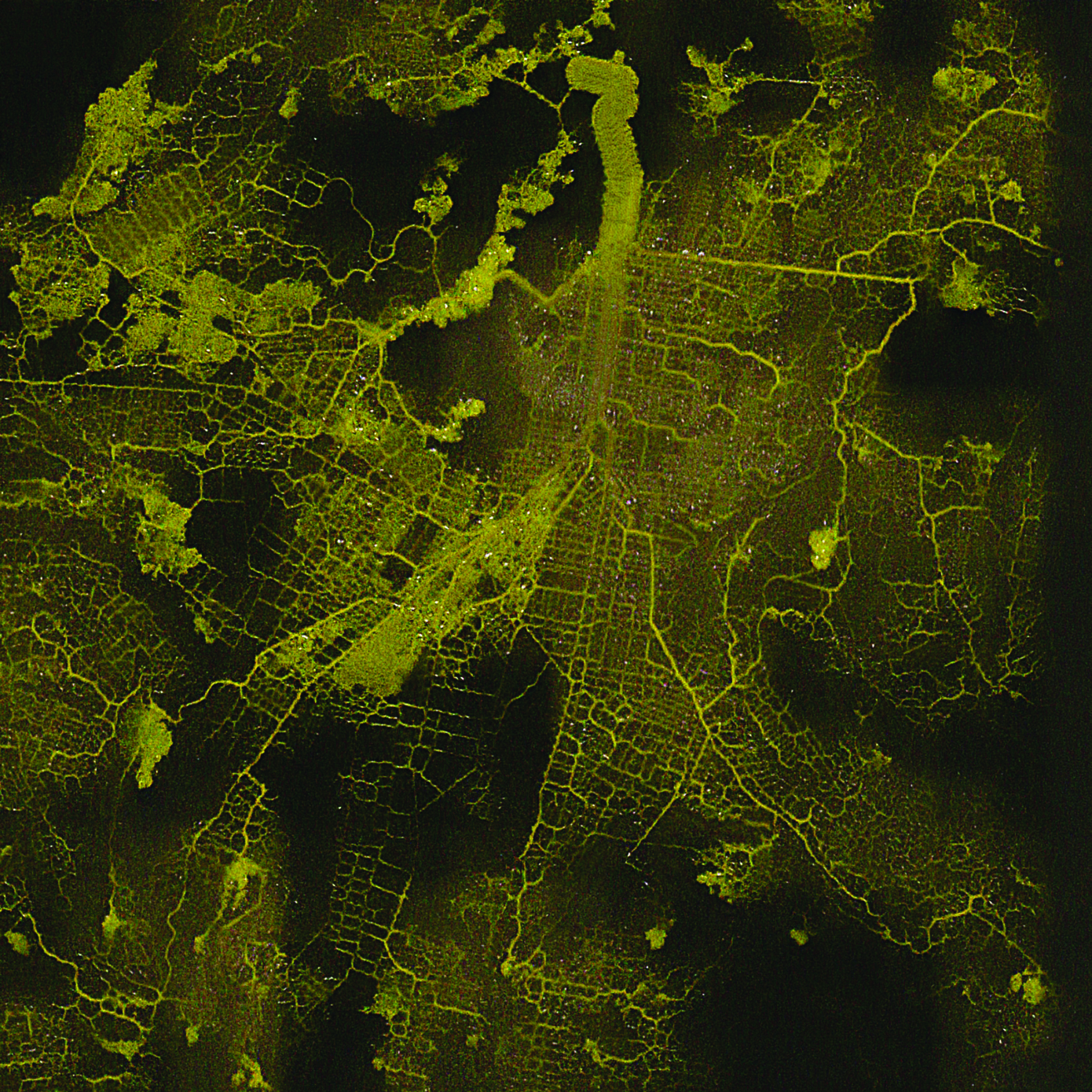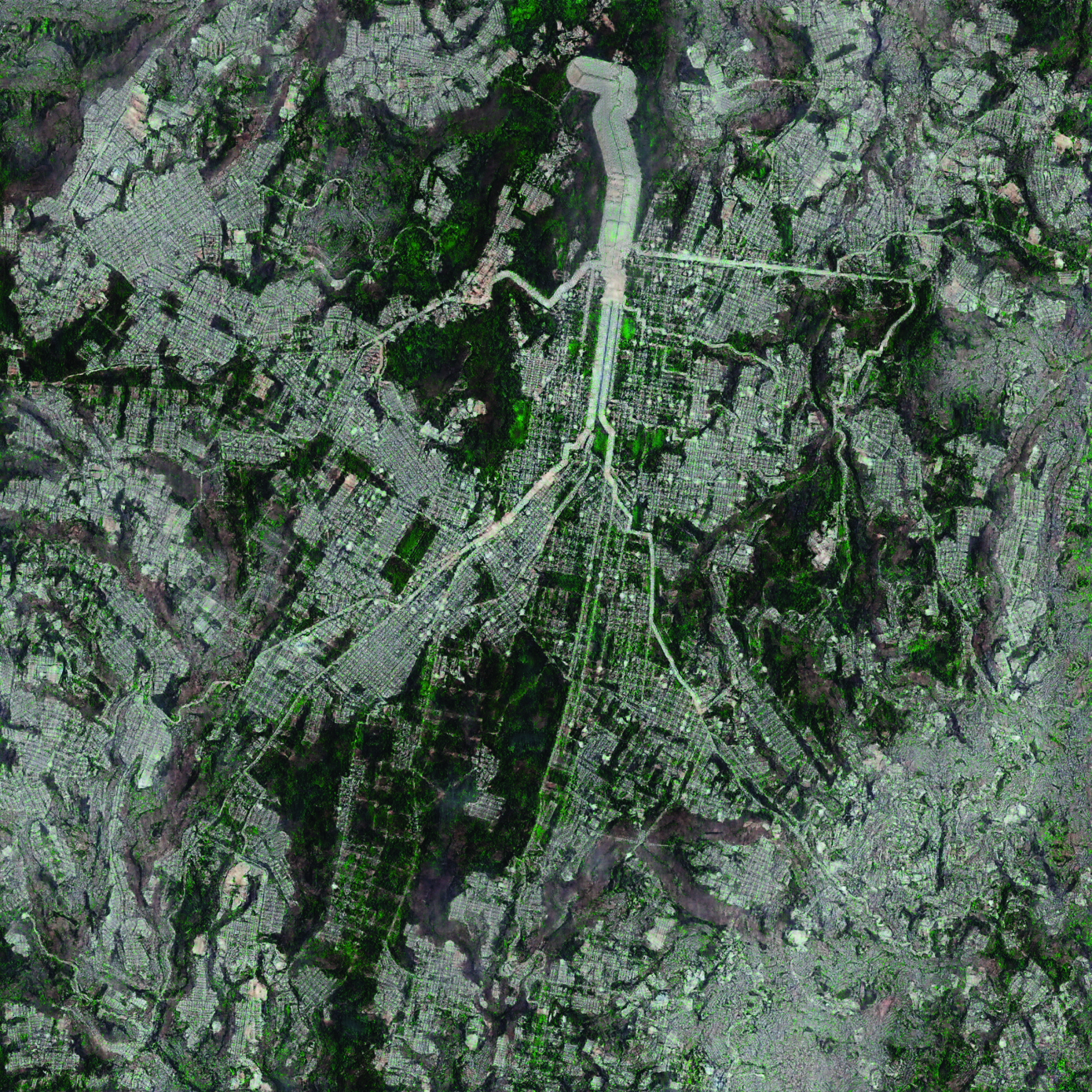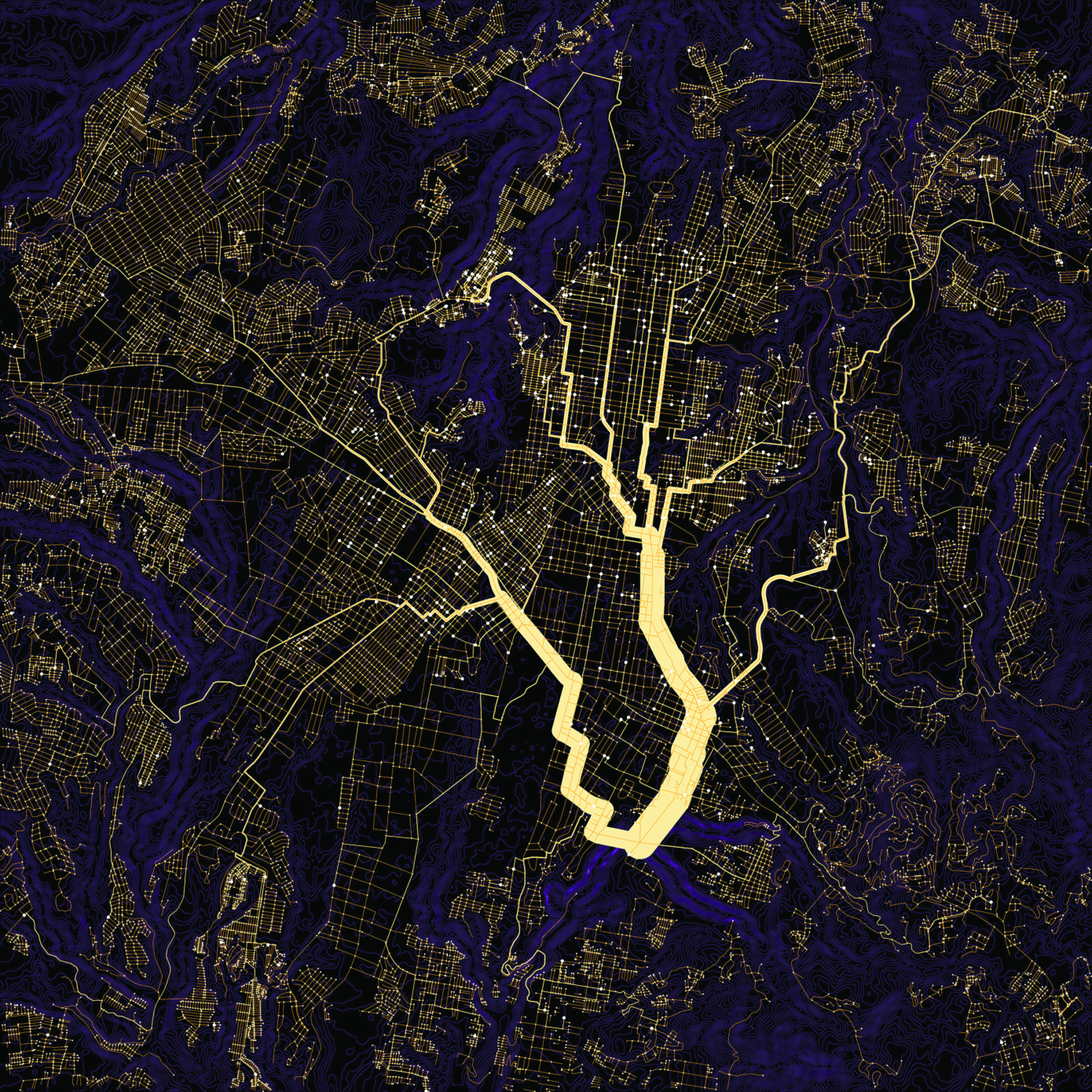Marie-Ange Brayer, you’ve been working on the intelligence of the living, particularly in the field of design and architecture. How can the correlation between the living and the machine be charted ? Where do the two forms of intelligence meet?
The living is actually hard to define; typically mentioned are features such as its adaptive capacity, its epigenetic dimension, its “indetermination,” following Henri Bergson, its “morphologic fluidity,”1 its unpredictability, or perhaps the “irreversibility of time” that runs through it.2 In the early twentieth century, the historical avant-gardes had a steady interest in the living and focused on the organism concept as well as its self-generation of form.3 In 1920, philosopher–botanist Raoul Francé highlighted the intelligence of nature in his book Plants as Inventors4 : the living served as a model “for the construction of machines.” In the 1930s, Jakob von Uexküll’s theories presented in Umwelt5 and A Foray into the Worlds of Animals and Humans were influential on the “biotechnical” forms of modernity later developed by Laszlo Moholy-Nagy for instance.
But, above all, what really connected the intelligences of the machine and the living in the post-war years was cybernetic thought. As early as the 1940s, Alan Turing was the first to associate machine intelligence with the notion of morphogenesis, of the transformation of the living. He viewed the living as a computer. Later, mathematician John von Neumann tied in the operation of cellular automata with living systems, connecting biological and machine-based systems. From their very inception, computer sciences have been permeated by the intelligence of the living.
Following Turing, the concept of “artificial life” blossomed from the late 1980s onward. Then, starting in the 1990s, the digital revolution made it possible to simulate the principles of the growing of living organisms thanks to programming software. Today, it is possible to hybridize organic and synthetic materials. The very concept of the living may perhaps one day become obsolete, expanding to that of the “biosphere,” between a systemic and a holistic approach of the living.
Interestingly enough, in the 1960s, in the wake of cybernetics, artistic movements emerged at the confluence between the intelligence of the living and the machine. One can think of Japanese metabolic architecture, with Kisho Kurokawa’s buildings representing double-stranded DNA, and of course Osaka’s Expo ’70, where robotic and organic works merged together, as in Robert Breer’s floating sculptures, the Floats. At the same time, in Europe and the United States, the intelligence of the living became a material used in artistic installations. Artworks presented themselves as unpredictable material, subject to the fluctuations of space-time, as is the living.
In the 1960s, influenced by the theories of biologist Ludwig von Bertalanffy,6 US critic Jack Burnham placed artistic creation at the crossroads between cybernetics and the living.7 Artists such as Hans Haacke, Alan Sonfist, Suzanne Anker, and David Medalla then included this dimension of the intelligence of the living in their works. Micro-organisms, for Haacke and Sonfist, form the changing material of their installations that support a new approach of space as environment and time as the intrinsic material of the artwork. The living is then defined as a “system”, an information “network,” engaged in energy exchanges. Two concepts then stand out that of self-organization and that of information transmission. The convergence between machine and organism also points to the notion of “behavior,” which features prominently in the sciences, as in the artistic practices of the 1960s and 1970s.
What paradigm shift occurred in the concept of the intelligence of the living with the onset of the digital in architecture and design ?
Digital technologies have brought about a radical paradigm shift opening up to a new variability of objects. There are no more boundaries when passing from the virtual to the real world, but rather a global networking of digital and physical processes. Starting in the late 1990s, architects compared digital simulation processes to living processes, as did Karl Chu with his “phylogenetic machine,” or Greg Lynn, who extols the concept of the “blob,” an intelligent entity inspired by Radiolaria that develops in a digital plasma. At the beginning of the 2000s, Philippe Rahm approached architecture as a metabolic exchanger supported by the intelligence of the living with his Hormonorium project. We presented all these investigations over the course of the ArchiLab exhibitions in Orléans in the early 2000s.
The intelligence of the “living” and its capacity for self-organization cut across both the physical domain of matter and the intangible digital field. Biotechnologies are now used as a medium by artists, designers, and architects. Digital simulation tools allow for the recreation of the living. Artists question the ties between the living and artifice, as well as the processes for the artificial re-creation of the living. In the field of design, creators resort to biomaterials made from biological organisms (mushroom mycelium, kelp, bacteria, yeast, etc.), capable of generating new sustainable, biodegradable objects. Design thereby provides research with new morphologies inspired by the living, following an eco-friendly approach.
The Mycelium chair, designed by the Dutch design studio Klarenbeek & Dros in 2018, is an example of innovation that intersects digital technologies and the intelligence of the living. The artwork, which now forms part of the Centre Pompidou collection, derives from the application of new 3D-printing technology using living mycelium that was first developed by these designers in 2011 as they were striving to find an industrial alternative to plastics and bioplastics. Klarenbeek & Dros are also interested in using algae to obtain new and innovative materials. Traditional production materials are replaced with a living substance. The chair is manufactured based on a 3D printed structure in which the reishi mycelium (reishi is a particularly sturdy mushroom) is digitally printed in a mixture of water, powdered straw, and sawdust. The mycelium acts as a form of living glue. Once this “living” chair is printed, it continues growing in the lab, through its mushrooms, for a few days. A thin coat of bioplastics is then applied to stop the fungi’s growth. The chair is compostable and this manufacturing process could find widespread application in everyday products.
Neri Oxman, a designer and engineer, and head of a research laboratory at MIT, has been interested in biodesign and IT since the very beginnings of the digital revolution. With the Aguahoja project, presented in 2019 in the Fabrique du vivant exhibition8 at theCentre Pompidou, which I curated along with Olivier Zeitoun, she exhibited biocomposite items which were digitally fabricated while also inspired by the properties of nature. Neri Oxman elaborates hybrid materials that are midway between the living and the artificial, designed based on molecular components that can be found in trees, insects, or bones, but digitally controlled. Her research focuses on new materials that could react to environmental stimuli, in an interaction between the physical, lighting, and thermal environment. Building on microorganisms, architects can create new composites, made from both living and synthetic materials, aiming for a level of new energy efficiency, as in the biofaçade projects of XTU’s architects (Anouck Legendre, Nicolas Desmazières), which include microalgae cultivation to generate biomass.
This shows that design is capable of generating living, synthetic objects in a symbiotic dimension with the environment. Design, in its broadest sense, can present itself like a living, intelligent artifact. This symbiosis between natural and artificial is our challenge for the future. Semi-living artifacts already exist, produced through robotic manufacturing and simulation software. Technosciences question these new “objects,” interstitial entities between living and non-living. In the early 1990s, Ezio Manzini had already mentioned a “quasi-subject object,” blurring the boundaries between the animate and the inanimate.9
For this reason, we incorporated an artificial “biorobot” project designed in 2018 by Harvard University’s Disease Biophysics Group in the collections of the Centre Pompidou after the Fabrique du vivant exhibition. The biorobot hybridized a tissue-engineered stingray with a gold skeleton, silicone fins, algae proteins, and the heart muscle cells of a rat. The penny-sized, stingray-shaped bio-robot is a real “living machine” with genetically-modified cells that moves when exposed to blue light and could ultimately lead to the production of artificial organs. Here, the intelligence of the living intersects with that of the artificial in the shift toward an “augmented body.”
What place should be given today to this intelligence of the living, in the context of the health crisis caused by COVID-19 ?
The pandemic can be seen as an admonition of the environmental disaster that threatens the very existence of the planet, as if the Earth was showing us that it can do without humankind, bringing to its knees the illusion of its omnipotence. “Humanity becomes unable to invest the world with the meaning that had hitherto allowed it to inhabit its environment–the world can do without humanity, and consequently the latter becomes ‘superfluous’, as Sartre puts it,” wrote Quentin Meillassoux.10 Viruses, between the animate and the inanimate, blur the boundaries between the living and the non-living; they confront us everywhere in the world with the same experience of survival, putting the belief in the insularity of humankind to an end. The health crisis also paradoxically brings us back to our condition as “migrants” on the planet, as artist Constant Nieuwenhuys had already announced with New Babylon back in 1958; our condition is that of “planetary beings” that cannot possibly protect ourselves from other beings given that “each body accommodates the life of the other species.”11
In the early 2000s, Peter Sloterdijk (Foams : Spheres III, 2003) advocated the concept of “immunology” to define life. The relentless destruction of ecosystems is a powerful reminder of the fact that society doesn’t amount only to relationships between humans, as Bruno Latour argues with Gaia, following scientist James Lovelock and microbiologist Lynn Margulis. Through the concept of ecosophy, taken up by Félix Guattari in the 1980s, we became aware of our interdependence—between humans, animals, and plants. For Timothy Morton, “the ecological crisis makes us aware of how interdependent everything is.”12 Donna Haraway also highlighted the connection between species (When Species Meet, 2008).
Other authors support a “post-human ecology,” a hybrid assembly of the living and technologies. This “ontological turn” has redirected researchers towards an inquiry into the “modes of existence” of humans and non-humans, following Philippe Descola’s anthropology of nature—which defends the legal status of non-human beings—as well as Eduardo Viveiros de Castro.
How could this intelligence of the living change architecture and urban planning ?
The living is the very network connecting species together and generating new forms of connectedness between humans and non-humans. The American scientist Janine Benyus, well-known for her research on biomimetics, argues that “we don’t always recognize nature’s computing styles.”13 At the end of the 1990s, Canadian researcher Suzanne Simard revealed the presence of a carbon transfer network between trees, formed when the roots of two plants are colonized by the same mycorrhizal fungus, connecting them and creating an underground ecological network. The “Wood Wide Web” is a sort of Internet that conveys information between the roots of trees through fungi. The trees can share information and help one another in the event of a viral infection for instance. Biologist Stefano Mancuso highlights this “intelligence” of plants that communicate together, as well as how they impact ant movement, topics that are now starting to be acknowledged, to design search engine algorithms for example.
Physarum polycephalum is one of the oldest micro-organisms on Earth. This single-cell organism, which inhabits forest moss, exhibits learning and information transmission capacities that could help us design urban development projects or solve drought issues in the near future. The networks generated by Physarum exhibit actual engineering capabilities. Physarum is considered as a “primitive form of intelligence :” it can move, regenerate, solve mazes, remember locations, and anticipate patterns. It also makes foraging decisions, as was demonstrated by ethologist and doctor in animal behavior Audrey Dussutour’s amazing research at the CNRS in Toulouse.
As part of the Synthetic Landscape Lab, UIBK / Urban Morphogenesis Lab at UCL in London, the architects of EcologicStudio (Claudia Pasquero and Marco Poletto) will present an unprecedented urban planning project based on the study of Physarum polycephalum at the next exhibition in the Mutations/Créations cycle at Centre Pompidou, Réseaux-mondes, slated for February–March 2022. Their projects explore a post-Anthropocene reality, where impact doesn’t only proceed from humans but also from artificial intelligence and intelligent systems adapted from nature. The project, entitled “GAN-Physarum : la dérive numérique” is based on a biodigital algorithm. A biopainting incorporates a living strain of Physarum developing on the map of a city, thereby acting as a “biotechnological” brain. The architects view the project as being based on the “interdependence of biological and digital intelligence.” GAN (Generative Adversarial Networks) are an algorithm, a form of artificial intelligence that will behave like a Physarum polycephalum, thereby demonstrating parallels between the growth of cities and living organisms. It is proven that transportation networks are “systems that are both biological and urban”; here, the primitive organism is used for a “re-metabolization” of the city, aiming for carbon neutrality as well as increasing biodiversity.
How could design be transformed, drawing from the shifting categories of humans, animals, and plants ?
We must look to these anthropological territories, between nature and culture, where the “animal condition” stands, in its hybridization with man. Recall the engraved image of the half-human, half-bird shaman at the bottom of the main shaft in Lascaux Cave, traced almost twenty thousand years ago—the animal question must be addressed through the questions of “liminality,” of blurring boundaries, the “human augmented with animal”14 or animal-human. Between “blended souls and animistic dreams,” as described in anthropologist Nastassja Martin’s breathtaking book, To Believe in the Animal, adumbrates a loss of otherness, an opening on the non-differentiation between species, which anthropologist Anna Tsing also discusses.15 Within the wider cosmos, the “non-hierarchy” between ecosystems (Philippe Descola), “what we call the ‘animal world’ is acted out in its coexistence with the human.”16 For this reason, we should come to terms with our “becoming-animal,” as theorist and designer Andrea Branzi argues, following Deleuze and Guattari.17 If we want to survive, we will have to find a new form of coexistence with the intelligence of the living and nature, and, for Branzi, to return to the “animistic roots”
of objects.

